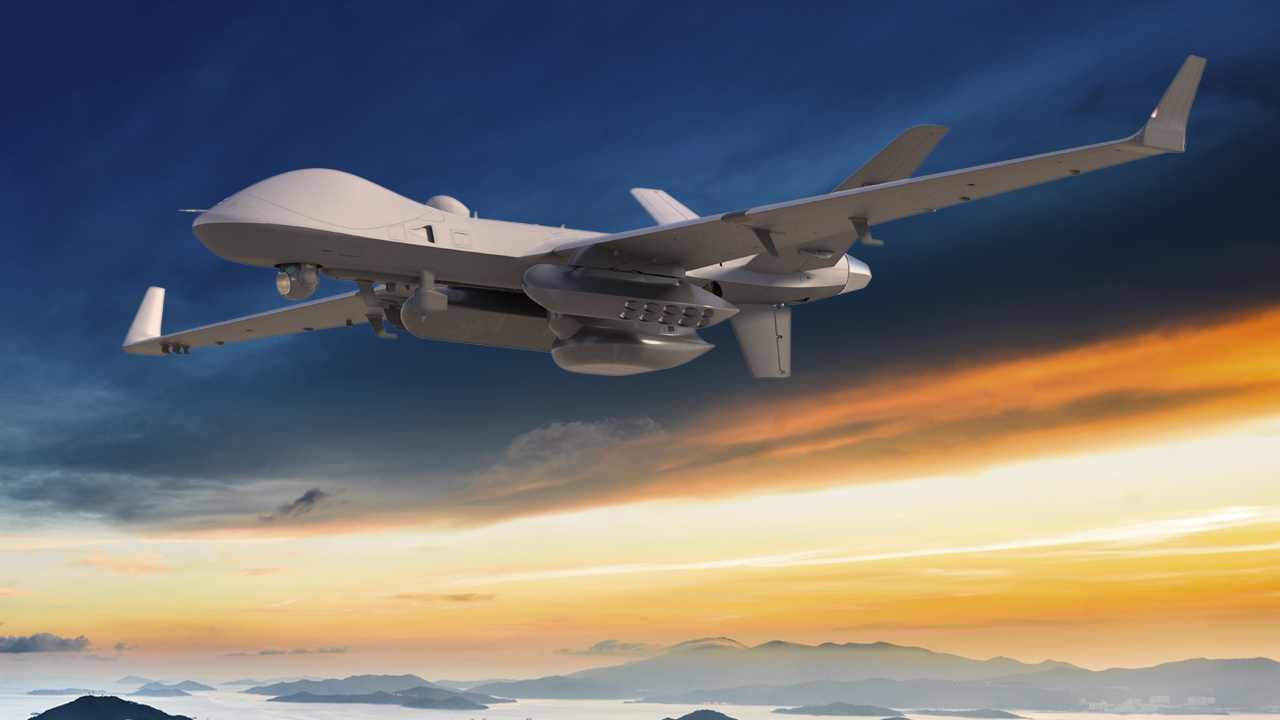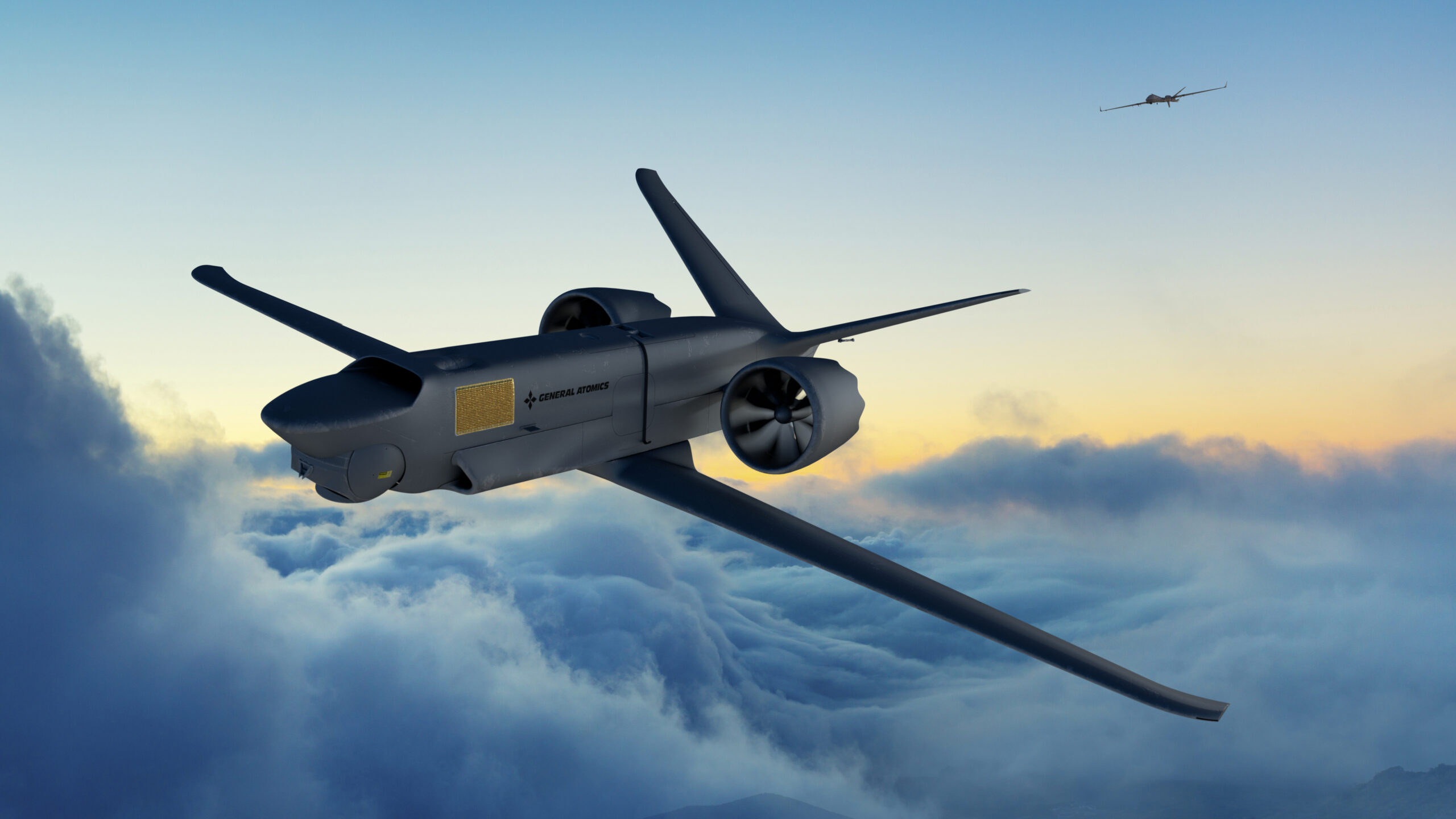
Artist rendering of GA-ASI’s MQ-9B SeaGuardian Unmanned Aircraft System (UAS) with two sonobuoy dispensing pods.
The new era of seapower requires new approaches and new tools for the U.S. military and its allies.
The challenges – and potential threats – are huge. America and its friends are confronting the need to integrate and operate against sophisticated and well-prepared adversaries over vast expanses of sea, air and space. Human-crewed platforms can’t do it alone.
In some cases, they shouldn’t – because the areas in which they need to operate are too hazardous for aircrews and human endurance limits often curtail required persistence.
In some cases, they can’t – because the persistent and high-quality surveillance that commanders require cannot come from a traditional aircraft filled with human beings who get bored, hungry and tired.
But remotely operated systems can’t do everything either. The right answer is independence and autonomy where it’s appropriate, teaming and integration everywhere it’s needed, and full-on control when it matters most.
San Diego-based General Atomics Aeronautical Systems, Inc., led the way through the first phase of the unmanned systems revolution with legendary aircraft, including the MQ-1 Predator and MQ-9 Reaper. As the U.S. Joint Force and its allies look ahead to the coming decades and their complex new challenges, GA-ASI is doing it again.
Some of the most essential aircraft and supporting systems already are operating today. MQ-9B SeaGuardian, for example, has demonstrated that it can integrate with U.S. Navy ships and aircraft in a complicated battle problem off the West Coast.
The aircraft provides wide-area situational awareness in the littorals or the open ocean and a suite of options to sense, communicate or deliver ordnance, both above and below the sea.
SeaGuardian is the only unmanned aircraft in its class that can conduct self-contained anti-submarine warfare, with the ability to both release sonobouys and process acoustic data while prosecuting targets. This capability changes the game for U.S. and allied warships that must remain on guard about the serious and growing threat posed by hostile subs.
The SeaGuardian’s ability to stay aloft for long periods means that naval commanders could patrol a key sea lane or section of ocean effectively nonstop. Not only could they keep tabs on all traffic moving through the area on the surface, they could detect the presence of submarines as well.
Situational awareness provided by longer-endurance and lower-cost unmanned air systems is the ideal complement to the Navy’s existing human-crewed maritime patrol aircraft. The sea service could sharpen its efficiency by operating the larger aircraft less often but with greater effect – a large crewed patrol aircraft could sortie to pursue a track initiated by a SeaGuardian, for example.
Pairing remotely operated and human-crewed platforms in this way could deliver more surveillance or other capability to commanders without the need for as many larger aircraft, crews and support personnel.
Automatic take-off and landing, shorter runway requirements and lighter footprint remote operations mean SeaGuardian and its peers need fewer people than ever to support their deployments. Their extended range lets them relocate to different bases within a theater of operations, keeping adversaries guessing. And new control systems automate a great deal of transit and interstitial flight, meaning fewer controllers can operate more aircraft more easily.
But the demands involved with future naval operations mean that MQ-9B won’t be the right answer every time. Air and naval commanders need other arrows in their quiver too.

Artist rendering of GA-ASI’s new Sparrowhawk Small UAS (SUAS), launched from an MQ-9B SkyGuardian in the distance.
One other option is with small unmanned aerial systems. GA-ASI’s new aircraft called Sparrowhawk, for example, rides under each wing of an MQ-9B and can take off in mid-flight. The larger aircraft might loiter in uncontested airspace, for example, and release a faster, nimbler Sparrowhawk to reconnoiter an island on which there was a suspected enemy presence.
The Sparrowhawk could detect and report the state of hostile forces, anti-air systems or send back other vital intelligence. Then it could return to its mothership, which would recover the smaller aircraft back under its wing and continue its mission – or deploy another Sparrowhawk.
Human-crewed aircraft might come back into the picture: An air component commander might be depending on the intelligence from Sparrowhawk about anti-air systems in order to task fighters in the area. The small aircraft could entice the adversary to energize a radar or fire off a missile, revealing their locations for the suppression of enemy air defenses. Or Sparrowhawk might jam the hostile radar without a subsequent kinetic attack.
Other small UAS will help defend against hostile fighters, support ground forces on the battlefield or take other important roles.
Whichever way warfighters choose to deploy the SeaGuardian and small UAS, what’s critical is that they – not invaluable human pilots and crews – get closest to the danger first. Then they can enable the human-crewed aircraft to operate safely, more effectively or take tasking elsewhere altogether.
Remotely operated systems like these revolutionized war on land by vastly expanding what was possible for U.S. and allied troops on the ground below. Now GA-ASI is evolving that revolution into naval and air combat.























